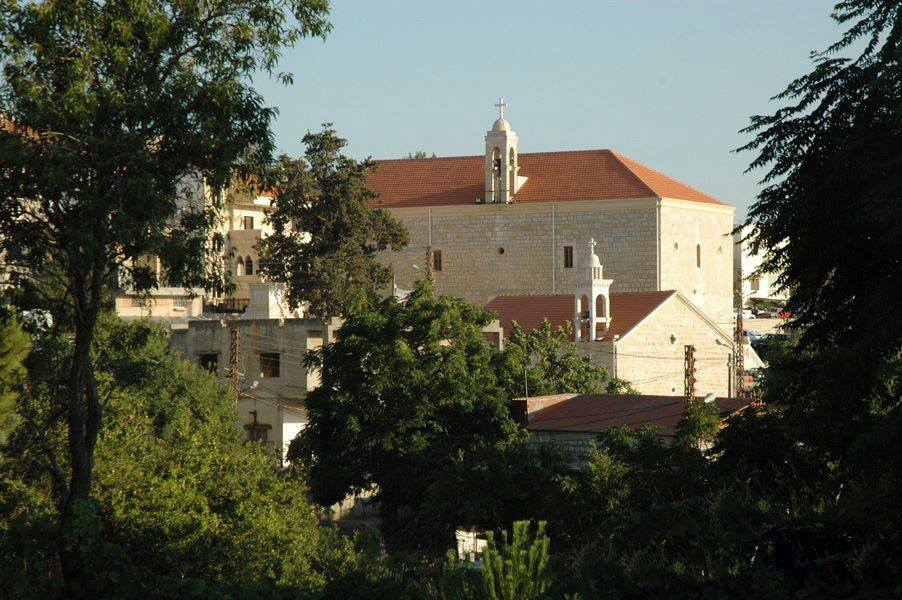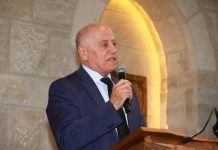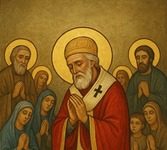All That You Need To Know About Ain Ebel, The Lovely & Ancient Lebanese Southern Town
Charbel Baraket/January 29/2021
تعرف على بلدة عين إبل الجنوبية
الكولونيل شربل بركات/26 كانون الثاني/2021
سألني أحد التلامذة الصغار عن معلومات لأنه يريد أن يكتب شيئا عن بلدته عين إبل فكتبت له هذا النص الموجز.
عين إبل ضيعة حلوة بحنوب لبنان الها تاريخ قديم. عين إبل الجديدة بلشت سنة 1594 مع وصول عائلات من شمال لبنان سكنوها وعمروا بيوتن من حجارة الخربة القديمة.
فيها عدة ينابيع أساسية هني:
– العين التحتى وهيي بركة قديمة بقدم الحضارة الكنعانية فيها نبع طورها الأهالي تتجمع مي أكتر وتكفي لسقاية حيواناتهن.
– العين الفوقا هي نبع المي هاللي بيسقي سكان الضيعة وموجودة فوق العين التحتى وانعمل مشروع مهم اليوم تيجمل العين الفوقا والتحتا بمساعدة من UNDP.
– عين طربنين ونحنا منقول أنو المسيح بزيارتو لصور وصيدا مرق من حدها وشرب منها.
– عين تالتي أكبر اسمها عين حانين كانت مشتركة لأهل عين إبل وجارتهن حانين.
– وعين الحرية.
ولاد عين إبل كانوا نشيطين وشغيلة ما خلوا أرض مش مشغولة الا انن بالخمسينات تبرعوا بشقفة أرض زرعوا فيها حرش صنوبر هوي اليوم المنتزه الأهم بالمنطقة وعمروا جنبو من جهة الغرب مستشفى ومن جهة الشرق مطعم ومنتزه فيه بركة سباحة وصالات للحفلات.
بعين إبل في اربع كنايس:
– الكنيسة العتيقة هاللي تعمرت بالقرن السابع عشر يعني 1600 وشوي ويقيت لسنة 1882 هيي الكنيسة الأساسية للضيعة واليوم على أنقاضها انعمل مزار للعدرا بيجوا الناس بيصلوا فيه وخاصة هاللي عندوا طلب خاص وبدو يندر بروح عهالمزار.
– الكنيسة الرئيسية اليوم بلشوا يعمروها سنة 1866 بس وقفها الأتراك مدة 16 سنة وبعدين كملوها الأهالي سنة 1882 وهيي كنيسة كبيرة معمولة عقد بتلات قناطر واقفة على صفين من العواميد رومانية النسق ارتفاع العمود 8 امتار وارتفاع السقف 12 متر. في حولها ساحة كبيرة وقبر لشهدا لبنان الكبير سنة 1920 وقاعتين للاحتفالات من الشمال والجنوب فوق الشمالية بيت الكاهن.
– كنيسة مار الياس العتيقة انبنت وقت ما توقف عمار الكنيسة الجديدة بين 1866 و1882 واعتمدت كنيسة لطائفة الروم الكاثوليك. اعيد ترميمها بعد الحرب سنة 2003
– كنيسة مار الياس الجديدة وهي الكنيسة الرئيسية للروم الكاثوليك وبيتبعها قاعة وبيت للكاهن.
– كنيسة مار يوسف وهي كنيسة دير الراهبات بنيت أواخر القرن التاسع عشر.
– كنيسة مزار ام النور وسيطلق عليها اسم البطريرك خريش وهيي كنيسة تابعة لمزار “ام النور” هاللي بعدو ما افتتح.
كانت عين إبل أهم مركز علمي بالمنطقة وفيها مدارس من نشأتها أول خوري كان الخوري عبد المسيح الطويل من حدث الجبة خريج المدرسة المارونية بروما وبقية الخوارنة كلهن تعلموا بمدارس الرهبان بلبنان ورجعوا علموا ولاد الضيعة لحد ما فتحت مدرسة عين ورقة تسجل فيها التلاميذ المعروفين من أول ايامها واحد منهن ساهم بانشاء رهبنة المرسلين اللبنانيي – الكريمي هوي الخوري بطرس دياب العينبلي من مشاهير عين ورقة. كمان من عين إبل الخوري ابراهيم دياب قديس نيحا هاللي خدم أهلها المطعونين وهوي عارف انو راح يمرض ويموت. ونحنا منقول انو بنت عمو رفقة هاللي ترهبنت بدير حراش هي القديسة هاللي عملت عجايب. وابنو المونسينيور يوحنا دياب العينبلي أول خوري على كنيسة مار مارون ببيروت ساهم من مالو الخاص بانشاء مدرسة الحكمة الشهيرة.
ولاد عين إبل عملوا مدارس على نسق مدارس لبنان بوسائل بسيطة وشجعوا فيها العلم والمعرفة وحمسوا اليسوعية على فتح مدرسة بعد سنة 1920 وبعدها لليوم بادارة راهبات القلبين الأقدسين. أول ثانوية بالمنطقة بعد صور كانت بعين إبل وكانت تعلم تلاميذ من كل المنطقة من تبنين وعيتا الزط وعيناتا وبنت جبيل ويارون إلى دبل ورميش وحتى علما الشعب.
ومن عين إبل في ثلاث مطارنة واحد منهن صار بطرك الموارنة (المطران فرح والمطران البطريرك خريش والمطران صادر) وفي مطران أرمني. ومن عين إبل كمان المونسينيور يوحنا دياب هاللي انذكر فوق والمونسينيور ايلي بركات والمونسينيور البير خريش والأب العام للرهبنة المخلصية سابقا الأباتي بولس سماحة وأبونا اتيان بركات من الأنطونيي هاللي خدم الانتشار ببلجيكا وفرنسا أكثر من عشرين سنة وابونا يوسف خريش المرسل اللبناني على الارجنتين ومن الاخوة المهمين الفرير فرنسوا صقر هاللي كان مسؤول عن مدارس الفرير بل الشرق والفرير نويل صقر كمان .
عين إبل بتفتخر انها دفعت تمن لبنان الكبير بوقفة مشرفة سنة 1920 استشهد فيها أكثر من ستين من ولادها. وبقيت صامدة سنة 1975 وساهمت أنو يبقى الجنوب لبناني.
ولاد عين إبل منتشرين بكل العالم كانوا أول من ساهم بنهضة حيفا من 1920 ل 1948 بعدين ساههموا بالكويت من 1952 وحتى اليوم وبابو ظبي قبل ما يبلش فيها البترول وحتى اليوم. وعندها جاليات قديمة بالبرازيل والأرجنتين وحاليا بكندا وأستراليا وبالعالم كلو.
دخل القرميد عين إبل بأول القرن العشرين بعد وصولو للبنان مع الحملة الفرنسية سنة 1860 وصار فيها بيوت كبيرة مزينة بالقرميد غير الكنيسة والدير كانوا اصحابها خاصة من هاللي هاجروا على الولايات المتحدة ورجعوا مع ثروة مقبولة.
كانت عين إبل تملك بالجوار عدة مزارع لولادها مثل المنصورة لبيت مطر والصالحاني لبيت يعقوب صادر وطيرفلسيه جنب الليطاني لبيت الخوري.
سنة 1936 كانت الدولة المنتدبة قررت تفتح طريق على الحدود من الناقورة لمرجعيون وقرر ولاد عين إبل أنو يكونوا على هالطريق فقاموا بفتح الطريق على حسابهن وبمجهودهن بين رميش وبنت جبيل حوالي تماني كيلومتر بالعونة والمساهمة الخاصة وهيك فرضوا على الدولة أنن يصيروا على الطريق هاللي كانت تعني الحضارة والاقتصاد.
عين إبل بالقرن التاسع عشر كانت قاعدة لقوافل التجارة بين حوران وصفد وصور وعكا وكانوا اولادها بيملكوا 100 جمل للنقل بقيوا لسنة 1920 وقت الكارثة.
اليوم أنتهى العمل في بناء مزار “ام النور” هاللي يعتبر أعلى مزار على اسم السيدة العذراء مش بس بالشرق الأوسط انما بالعالم كلو . في برجين بعلو 41 متر الأول بهنغاريا والثاني بفنزويلا بينما ارتفاع برج “أم النور” 75 متر مع التمثال و61 متر للقاعدة. وهو انبنى على أعلى تلة بالمنطقة 850 متر وبطل على البحر وجبل الشيخ وجبال الباروك ومنو بتشوف حيفا وجبال الجليل حتى مشارف الناصرة موطن العذراء. من هون أهميتو كمعلم سياحي وديني “ببلاد البشارة” وراح يكون، بقدرة العذراء، مركز جذب وتجمع لكل هاللي بيتعبدولها وبيحبوا يصلولها ويمشوا على خطى المسيح بهالأرض الطيبة.
اليوم تعتبر عين إبل قبلة المنطقة للتسلية والمرح فيها مركز رياضي لكل الملاعب المطلوبة من كرة القدم لكرة السلة لكرة المضرب وأكثر من مسرح للأعمال الفنية وقاعات للمحاضرات واوتيل خمس نجوم ومعاصر للدبس والزيتون وعدد من المطاعم والمقاهي المعروفة بخدماتها المميزة خاصة في فترات الأعياد والصيف.
هاللي بيزور عين إبل ما فيه ينسى هالتجربة الفريدة وخاصة لأنها بتتميز بطقس ناشف بيبعد عن رطوبة البحر وبيتمتع بنسيم متحرك طيلة أيام السنة فموقعها بين البحر ومنخفض الحولة باتجاه البحر الميت بخلي الرياح تتحرك بشكل مستمر جايي من أعالي البحر وبتتنقى من الرطوبة بمرورها عبر تلال السنديان والغار والخروب على مسافة 20 كيلومتر قبل ما توصلها.
All That You Need To Know About Ain Ebel, TheLovely & Ancient Lebanese Southern Town
Charbel Baraket/January 29/2021
A young student who wants to write about his hometown Ain Ebel asked me for some informations, so I wrote the following:
Get to know Ain Ebel…
Ain Ebel, a lovely village in the south of Lebanon, has an ancient history.
The New Ain Ebel, started in 1594, with the arrival of families from North Lebanon.
They lived in and built homes using stones from the ruins of the old town.
There are several basic springs in Ain Ebel:
– Al-Ain Al-Tahta, (the Lower spring) which is an ancient pool as old as the Canaanite civilization. It has a spring of water within. It has been developed by the Ain eblis to gather more water for their animals.
– Al-Ain Al-Fawqa (the higher spring) is the spring that assure the drinking water for the residents. It is located above the Lower Ain (Al Ain El Tahta). An important project was done lately to protect and garnish both springs with the assistance of the UNDP.
– Ain Trabnine, the spring we believe Jesus used its water to drink during his visit to Tyre and Sidon.
– A third abundant spring, called Ain Hanine, was shared by the people of Ain Ebel and their neighbors in the village of Hanine.
– Ain el Hurriyyeh.
The Ain Eblis as active and working people could not leave an uncultivated land. But in the fifties, they donated a piece of land where they planted pine trees to became today the most important park in the area. Next to this it they have built a hospital on the West side, and a restaurant with a swimming pool and banquet halls on the East side.
You can find in Ain Ebel four churches:
– The old church, which was built in the seventeenth century, and remained the main church until 1882. Today, a shrine was built for Virgin Mary on what’s left of its ruins. People with special requests used it to pray.
– The main church, was built starting 1866, but the Ottomans stopped the building operations for 16 years, then in 1882 it was completed. It is a large church built with the Maronite Cathedrals’ dimensions. It consists on three arcades standing on two rows of Roman columns (four on each side). The height of the column is about 8 meters, and the ceiling top height 12 meters. Annex to it a wide place that ends with The Martyr Tomb where more than sixty of the brave Ain eblis repose. Those Martyrs have fallen on the 1920’s massacre leading to the creation of the Great Lebanon. Plus, two halls for ceremonies from both sides on top of one of them is located the priest’s house.
– The old Mar Elias Church was developed at some point, when the work on the main Church was stopped between 1866 and 1882, it was adopted as a Roman Catholic church. Recently It was restored after the civil war in 2003.
– The New Mar Elias Church, which is the main Roman Catholic church, has also a hall and a priest house.
– St Joseph Church, the Church of the Nuns Covent, was built in the late nineteenth century.
– The Church of Em Ennour Shrine (not inaugurated yet) will be named after the Patriarch Khreish .
Ain Ebel was an important learning center in the region. It had a kind of school since its inception. The first priest being Abd al-Massih al-Tawil from Hadath al-Jebbeh, a graduate of the Maronite School in Rome. The priests that follow learned in the Maronite schools around Lebanon and returned to teach the children of the village. When the “Ain Waraqa school” opened in 1789 many of the Aineblis students were registered in. Among them, priest Boutros Diab Al Ain-Ebli a famous figure of Ain Waraka who contributed to the establishment of the Lebanese Missionaries Order-“The Kreimist”.
From Ain Ebel as well, the priest Ibrahim Diab, the Saint of Niha, who served the sick people contaminated by the plague even though he knew that he was going to get sick and die. We believe that his first cousin, Rafka who was a Nun in Deir Hrash is the Saint who made miracles. His son is Monseigneur Youhanna Diab Al-Ainbli, the first priest of Saint Maroun Church in Beirut, contributed from his own money to establish the famous School known as “La Sagesse ““Al Hikmeh”.
The Ain Eblis established schools similar to the Lebanese ones they have learned in. They encouraged knowledge, and motivated Jesuits to open a school in Ain Ebel after the year 1920 till today, now under the administration of the Soeurs des Saints coeurs.
The first secondary school in the region after Tyre was in Ain Ebel. It taught students from all over the region, from Tibnine, Ayta el zott, Ayneta, Bint Jbeil and Yaroun to Debel, Rmeish, and even Alma al-Sha3eb.
There are three Bishops from Ain Ebel, (one of them became Maronite Patriarch), Bishop Farah, Bishop Khreish, and Bishop Sader plus one Armenian Bishop as well.
Monseigneur Elie Barakat, Monseigneur Albert Khraish, Abbot Paul Samaha the Superior General of the Salvatory Order, and our Father Etienne Barakat, from the Antonine who served the Lebanese diaspora in Belgium and France for more than twenty years, also Father Yousef Khraish who served for 15 years in Argentina. Frère François Saqr was responsible for the Frères Schools in the Levant and Frère Noêl Saqr as well. (a full study about all the Ain Eblis priest and nuns is under preparation)
Ain Ebel is proud to share the creation of Greater Lebanon with an honorable stand in 1920 in which more than sixty of her children were martyred as mentioned above. It stands strong during the 1975 troubles, and helped keeping the South, Lebanese.
The Ain Eblis spread out through the world, contributed to the rise of Haifa first since before 1920 to 1948, then they contributed to Kuwait’s from 1952 to the present day as well as Abu Dhabi’s even before the oil discovery. It has an old emigration to the USA, Brazil and Argentina and a new one to Canada and Australia and all around the world.
The roof brick tiles entered Ain Ebel at the beginning of the twentieth century after it arrived to Lebanon with the French Campaign of 1860. Big houses were decorated with such tiles, together with the church and the Covent. These houses were mainly built by immigrants who returned back from the United States with acceptable fortune.
Ain Ebel used to own several farms in the neighborhood for her children, such as the farm of Beit Matar in Mansoura, the farm of Beit Yacoub Sader in Al Sal3ani and the farm of Beit Al-Khoury in Tayr Samhat at the bank of the Litani river.
In 1936, the Government planned to open a road on the borders from Naqoura to Marjayoun, and the Ain Ebelis decided to put their village on the map. They opened then the road at their own expense and with their own efforts, between Rmeish and Bint Jbeil, about eight kilometers without the help of the government… That is how they imposed themselves as part of the main communication axes which meant then civilization and economy.
Ain Ebel in the nineteenth century was a base for trade caravans between Horan, Safad, Tyre and Acco. Its children owned 100 camels for transportation use, that remained active until 1920 the day of the massacre.
Today, the major work has been completed on the construction of the “Em Ennour” shrine, which is considered the highest shrine named after the Virgin Mary, not only in the Middle East, but in the whole world. There are two towers of 41 meters high dedicated to the Virgin Marie, the first in Hungary and the second in Venezuela, while the “Em Ennour” tower is 75 meters high with the statue and 61 meters up to its base. This shrine is built on the highest hill in the region (850 meters) overlooking the sea of Tyre, the Barouk Mountains and Mount Hermon on the Lebanese side, and on the other side the see of Haifa, the Galilee Hills as far as Nazareth, the home of the Virgin Marie.
That’s how Ain Ebel is an important touristic and religious landmark in the “Blad Bechara” and, with the help of Our Lady, it will become a center of attraction and gathering for all of those who would love her and worship her, or those who like to walk and follow the footsteps of Jesus Christ in this Holy land.
Today, Ain Ebel is considered the destination of the whole region for entertainment and fun, as it has a sports center with all required fields from football to basketball to tennis etc… also theaters and halls for artistic and cultural activities, a five-star hotel, molasses and olives presses, and a number of restaurants and cafes known for their distinctive services, especially during holidays and summer.
Those who visit Ain Ebel will never forget the unique experience, especially because it is characterized by a dry weather away from the humidity of the sea and enjoys a moving breeze throughout the year. The location of Ain Ebel is between the sea and the low land from Hula towards the Dead Sea, that leaves the winds moving continuously coming from the high sea and filtering its humidity as it passes through the hills of oaks, laurels and carobs for more than 20 kilometers before reaching it.





















